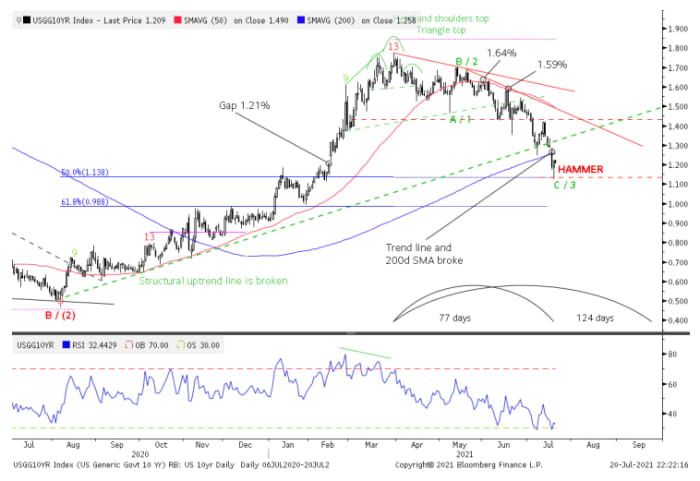This post was originally published on this site
The benchmark 10-year Treasury yield continued to recover from Monday’s strong rally in bonds, going from a five-month low below 1.18% to its current level of 1.279%.
And that recovery may have more room to run. A BofA Global Research note points to reasons why a “tactical” selloff could still occur to end the month and the yield could still head higher.
The widely followed 10-year yield
TMUBMUSD10Y,
is the benchmark that guides a wide array of other borrowing costs, like those on mortgages. It fell to a five-month low below 1.18% to start the week, bursting through its 200-day moving average, on concerns about the spreading COVID-19’s delta variant and amid a flight-to-safety in bonds by investors. But it’s since bounced back as investor sentiment improves.
Read: 10-year Treasury yield slides to 5-month low, touches 1.179% as delta spread spooks market
Monday’s rally triggered a few “notable” signals suggesting “overbought” conditions and “a bounce to 1.35%, maybe 1.42%, by early August,” says BofA technical strategist Paul Ciana. The break below all supports, including the 200-day moving average, “favors a downtrend in yield, not a correction” since the yield’s peak in the second quarter. Yields and bond prices move in opposite directions.

BofA Global Research, Bloomberg
“Now would be an impressive place for a stronger-than-expected reversal,” Ciana wrote in the note on Wednesday. That reversal, resulting in higher yields at the end of July and/or early August, would help form a distinctive pattern in the rate’s recent trajectory: It would look something like “the right shoulder of a head and shoulders” figure.
As long-end yields recovered Wednesday, stocks climbed, with the Dow Jones Industrial Average DJIA rising 286 points, or 0.8%. The S&P 500 SPX also rose 0.8%.

